
























Navigate













by the demand for sustainable prac tice s, companies wo rldwide ar e adopting green initiative s, pr omoting diversity and inclusion, and empowerin g society in their blueprints . How will businesse sc ontinue to innovate and stay ahead? Explore our cutting- edge research on toda y’s business strategy trends
Navigate uncertain times by harmonising accountability and creativity in your leadership to overcome biases. Embrace innovative strategies, inspire your team, and drive unparalleled success and inclusivity.

Sustainable tourism is redefining modern travel through green luxury, sustainable hospitality, and responsible tourist behaviour.
As travel rebounds post-pandemic, sustainable tourism is reshaping the industry worldwide. Booking.com’s Sustainable Travel Report 2024 reveals that 75 per cent of global travellers aim to travel more sustainably in the next year, challenging destinations, industries, and policymakers to redefine tourism for both enrichment and sustainability.
Having dedicated over ten years to sustainable tourism research, Professor Lisa Wan, Associate Professor at the School of Hotel and Tourism Management of the Chinese University of Hong Kong (CUHK) Business School, is leading this transformative shift in the region.
Understanding the heart of sustainable tourism
At its core, sustainable tourism seeks to minimise negative environmental impacts while fostering economic growth and cultural exchange. This balance becomes crucial as the consequences of unsustainable tourism grow more evident with the post-COVID tourism surge worldwide. Professor Wan highlights how overtourism has strained local resources and infrastructure, exacerbating issues like waste and environmental degradation. Solutions, she says, lie in encouraging more responsible tourist behaviour and redefining destinations not as transient playgrounds but as interconnected, shared spaces.
By reducing psychological distance and reinforcing the idea that “the travel destination is also our home”, tourists can cultivate a sense of responsibility. Effective initiatives include promoting human connection with local residents through warm interactions and fostering community integration with immersive cultural experiences. These experiences deepen visitors’ connection with the land and its people.

Examples like Hong Kong’s “cultural in-depth tourism” illustrate the benefits of meaningful and experiential travel. Activities such as hiking Hong Kong’s Dragon’s Back or participating in islandhopping foster a greater appreciation for local landscapes. Similarly, Japan’s Satoyama tourism invites visitors to engage in sustainable farming and traditional rituals, creating opportunities for cultural exchange and ecological education. These approaches mitigate environmental harm while enriching tourists’ understanding of destinations and inspiring sustainable behaviour.
This evolution aligns with the changing travel preferences in the post-pandemic era, ushering in a new age of purpose-driven tourism. Once known for shopping and gastronomy, Hong Kong has seen tourists reprioritise their travel motives following the pandemic. As Professor Wan explained at the Economist Impact’s Sustainability Week Asia 2025 conference, held in Bangkok on 25 and 26 March, “During the pandemic, the tourism industry halted, and consumers now value mental well-being and nature over materialism. Travellers increasingly seek cultural immersion, natural environments, and relaxation, rather than just shopping.”
Despite initial scepticism regarding the revenue potential of sustainable tourism, its long-term benefits are becoming evident. Professor Wan highlighted the role of strategic marketing in making ecotourism both profitable and sustainable. “For high-income groups, this translates to luxury offerings in natural settings, which can generate significant revenue.” According to a recent survey, 66 per cent of luxury travellers said they are willing to pay more to travel responsibly.
Hospitality’s role in advancing sustainability
The hospitality industry occupies a pivotal role in shaping the future of sustainable tourism. Professor Wan’s research highlights two pivotal strategies: redefining luxury and authentic communication of sustainability initiatives.

Modern luxury is shifting from extravagance to quality over quantity, emphasising sustainability that enhances high-end hospitality. This approach views going green as an investment in the future, adding value to the brand.
Six Senses Resorts exemplifies this trend by incorporating locally sourced sustainable materials and organic farm-to-table dining into their offerings. Guests enjoy private nature excursions and renewable-energy-powered wellness retreats, blending indulgence with conservation efforts. Meanwhile, leading hotel groups are investing in advanced technologies to minimise waste and eliminate single-use plastics, which also shows the effort of transforming luxury in a sustainable way.
Authenticity in communication and traveller education is also key. Greenwashing—or the misrepresentation of environmental practices—undermines consumer trust. Professor Wan’s findings show that Asian and younger travellers are drawn to tangible eco-initiatives, while Western and mature travellers value ecocertifications. Yet the fundamental principle remains the same: honesty and transparency.
“Consumers are smart and quick to identify greenwashing. My advice to hotels: be honest. People appreciate authenticity and understand the challenges of adopting sustainable practices. Efforts, even small ones, are valued. From a consumer perspective, embracing sustainability often means paying more and sacrificing convenience. Yet, this is a meaningful pursuit for the benefit of future generations.”


While individual companies may commit to sustainability, a lack of standardised regulations often hampers progress. Asia’s rapid economic growth and diverse markets require tailored policies to ensure that sustainability practices are rigorous yet adaptable.
To foster industry-wide change, Professor Wan introduced CUHK Business School’s Greater China Hotel Business Sustainability Index in 2021 to encourage hotels in the region to improve their operations to meet sustainability benchmarks. “We set a series of benchmarks based on our independent research. We study the hotels’ public reports and conduct surveys to assess their operations and strategic intent. Over the past four years, the data shows encouraging improvement in these hotels’ sustainability efforts. Such measures effectively motivate hotels to integrate sustainability into their goals and contribute to society.”
The pursuit of sustainable tourism lies in achieving a delicate balance: environmental protection to minimise ecological damage, social responsibility to enhance cultural appreciation and community well-being, and economic viability to ensure profitability without compromising sustainability.
As Professor Wan emphasises, the goal is not to limit travel but to redefine it in ways that benefit both destinations and their visitors. Hong Kong’s recognition as one of the “Dreamy Destinations for a More Sustainable Getaway” in 2024 illustrates how proactive initiatives can position regions as leaders in sustainable tourism.
Ultimately, sustainable tourism offers an invitation to travel more consciously. It challenges us to rethink luxury as an opportunity to give back—to the environment, to communities, and to future generations. By embracing this ethos, we can transform tourism from a source of harm into a force for good.

At Economist Impact’s Sustainability Week Asia 2025, Professor Lisa Wan engages with regional business leaders and journalists, exchanging insights on the future of sustainable and responsible tourism
Watch the Spotlight Interview of Professor Lisa Wan at Economist Impact’s Sustainability Week Asia 2025
Recent research indicates that creativity can yield diverse and sometimes conflicting effects on individuals’ career paths and overall life satisfaction.















































As the saying goes, “There is only a fine line between genius and madness.” From the legendary painter Vincent van Gogh to the enigmatic billionaire Elon Musk, their creativity is celebrated yet occasionally viewed as eccentric.
While creativity is often regarded as a hallmark of humanity, mixed perspectives exist on how creativity intertwines with well-being and career success. How does creativity influence mental health and overall well-being? Can it be both a blessing and a burden in one’s professional journey? What role do genes and genetic factors play in this intricate interplay?
Li Wendong, Associate Professor of the Department of Management at the Chinese University of Hong Kong (CUHK) Business School, sought to address these questions in his recent study titled A genome-wide association study of occupational creativity and its relations with well-being and career success
Given that creativity is a multifaceted concept that proves to be quite challenging to measure, Professor Li and his collaborators categorised occupational creativity into three domains: artistic, scientific and managerial. “We examine the genetic architecture of occupational creativity in a large-scale study and probe the genetic correlations between occupational creativity with wellbeing and career success,” he says.
Professor Li and his PhD student Yu Kaili conducted the study in collaboration with Zhang Xin of the Shanghai University of Finance and Economics, Song Zhaoli of the National University of Singapore along with his PhD students Zhu Yimo and Du Nianyao, as well as Fan Qiao of Duke-NUS Medical School.
The team conducted a large-scale genome-wide association study using data from the UK and the US, and the main analyses were based on around 500,000 participants who were 40 years old or older in the UK. Their analysis revealed intriguing—and sometimes contradictory—relationships between creativity, mental health, happiness, and career outcomes.
One of the key findings is the intricate genetic connection between creativity and well-being. “There are genetic overlaps between creativity with both positive and negative well-being indicators,” says Professor Li.
Creativity is positively associated with indicators of good health and happiness, including longevity and subjective well-being—a selfassessed measure of life satisfaction and happiness.
On the other hand, the researchers identified positive genetic links between creativity and indicators of diminished well-being, such as bipolar disorder, schizophrenia, and autism, suggesting that the same genes that foster creative brilliance may also harbour risks for mental health disorders.
“
We found significant and positive genetic correlations between creativity and indicators of high levels of career success, including income and occupational status.“
The study also unveils varying genetic connections between different forms of creativity and well-being indicators. For instance, artistic creativity showed a stronger association with schizophrenia, while managerial creativity exhibited a closer link with subjective well-being, and scientific creativity demonstrated a heightened correlation with autism compared to managerial creativity.
“Our findings suggest that genetic variants associated with creativity might simultaneously enhance the likelihood of experiencing both low and high levels of well-being,” Professor Li adds. “However, various forms of creativity exhibit distinct genetic influences on mental health and well-being.”
There is a stereotypical view that individuals in creative fields often face unique challenges, as careers in areas like the arts are perceived to earn less compared to professionals in many other industries. However, Professor Li and his collaborators paint a more nuanced picture.
“We found significant and positive genetic correlations between creativity and indicators of high levels of career success, including income and occupational status,” Professor Li says. This means that the same genes positively linked to occupational creativity may enhance the chance for employees to earn high levels of income and have prestigious occupations.
Notably, the researchers observed that managerial and scientific creativities exhibited stronger positive genetic correlations with income compared to artistic creativity. This suggests that while artists possess the genetic potential for financial success, individuals in managerial and scientific roles may have a natural advantage in achieving higher earnings.
However, creative individuals often report higher levels of job satisfaction, which is considered an indicator of career success. “The different genetic correlations of the different types of occupational creativity with other variables point to the importance of differentiating creativity into different domains,” Professor Li adds.
The study also uncovers the genetic intricacies underlying various forms of creativity. The researchers observed higher heritability in artistic and scientific creativities compared to managerial creativity. In other words, genes may play a more important role in shaping artists and scientists.
Nevertheless, Professor Li cautions that establishing a clear causal link between creativity, mental health, and career success remains a challenge. He calls for a deeper exploration of these correlations and their genetic underpinnings in future research because the definition and measurement of creativity at work can sway results.
Genes associated with creativity are intricate and multifaceted, capable of sparking bright, creative ideas while also potentially presenting risks and challenges to mental health. By revealing the complicated genetic associations, Professor Li underlines that the recent study offers valuable insights into leveraging creativity for enhanced wellbeing and career success.
In the workplace, creative individuals who struggle with interpersonal communication could benefit from tailored support, such as adequate space and resources provided by companies. “Managers should understand the importance of how environment can help release individual potential and create a positive, healthy and inclusive work environment to maximise the positive role of the creativity gene,” he suggests.
From an individual perspective, Professor Li highlights the dual nature of creativity. “While everyone aspires to be creative, individuals should also focus on selfadjustment and stress management to ensure sustained and healthy creativity,” he advises, encouraging individuals not to hesitate in seeking assistance when needed.

Professor Li Wendong is an Associate Professor in Department of Management at CUHK Business School and award-winning researcher and educator. He obtained his PhD degree from National University of Singapore. Professor Li conducts research on proactivity across a number of areas, including leadership, work design, and well-being. He is an associate editor of the Journal of Occupational and Organisational Psychology, a senior editor for Management and Organisational Review, and the Asia Pacific Journal of Management, and a contributing editor for the Journal of Applied Psychology. He is also a member of board of directors for the Asian Academy of Management and a board member of Reviewing Editors for PNAS Nexus, a sibling journal to the Proceedings of the National Academy of Sciences (PNAS).
Smarter allocation of agents with different performance levels to sales teams could boost returns for real estate firms facing challenging market conditions, a new study finds.























Boosting productivity by building high-performing teams is a key survival strategy for companies in tough economic times–and few sectors have faced tougher conditions over recent years than the real estate industry. But how exactly do you mix and match staff with different characteristics and performance levels to create more effective teams, especially when managers have to assign jobs on the spot or have no effective way of assessing the qualities employees possess that are critical to teamwork, such as soft skills?
A new study has introduced a quantitative approach for making the best matches between real estate agents with widely differing latent characteristics and performance levels to build teams with the greatest likelihood of completing property deals.



Entitled Heterogeneous complementarity and team design: The case of real estate agents , the study was conducted by Mandy Hu Mantian, Associate Professor of the Department of Marketing at the Chinese University of Hong Kong (CUHK) Business School, in collaboration with Yan Xu of Virginia Polytechnic Institute and State University, Chu Junhong of the University of Hong Kong, and Andrew Ching of Johns Hopkins University.
It found that real estate firms could boost the number of deals they successfully conclude on sales and rentals if they restructure the agent teams following the quantitative approach. As real estate agencies typically earn a commission based on a percentage of the property’s sale price, even a small increase in successful deals can translate into significant revenue.
“Given that the average value of a property in mainland China is 2.16 million Chinese yuan (US$324,000), this translates to a financially significant improvement,” says Professor Hu, underscoring the practical implications of research findings in team restructuring to boost sales. “Furthermore, this restructuring strategy does not incur any additional hiring costs and, therefore, the expected output gain translates to profits directly, which is especially valuable for firms facing staff shortages or hiring freezes.”
The study applied the proposed quantitative model to the context of 484 sales agents at Lianjia, one of mainland China’s largest real estate brokerage companies, from 2011 to 2017. The agents all worked across 17 stores in the Beiyuan subdistrict, a business zone in Beijing, and their income came primarily from commissions on successful deal closures. During the period, they worked on 56,146 properties and successfully closed 17,842 deals.
“Store managers make team assignment decisions when a property owner first visits a Lianjia store to list the property for sale or to rent,” says Professor Hu. “The first agent to interact with the owner automatically joins the property’s sales team. In addition, the manager might assign extra agents who are available at that
“These findings suggest that we may want to pair up agents who show moderate differences in their working ability.“
— Professor Mandy Hu Mantian
moment to the property’s team. The management also prioritises maintaining workload fairness among all agents.”
The researchers were given the complete team assignment history of every agent and detailed characteristics of all the properties assigned to them. They analysed the performance and collaboration data of all teams with one or two members, which jointly accounted for 94.4 per cent of properties handled over the period. They found that by dividing the agents into six types based on their solo performance and teamwork effectiveness in completing deals— where agents with the lowest success rates are labelled as type 1 and the highest performers as type 6—it is not necessarily the case that pairing a low-performing agent with a high-performing one in twoagent teams would increase the success rate.
Next, the researchers developed a quantitative model with a cutting-edge technique to figure out the latent compatibility of agents to work with each other. The model also incorporates observed data on agents’ gender, home province, education level and age, which was used for further team performance analysis.
Overall research framework

The study found that the agents with average solo performances (latent type 4) are the best team players. For all agent types, except the best solo performer (type 6), the probability of closing a deal is
greatest when paired with type 4. Pairings involving another type 4 agent have the highest chance of success, followed by matches with a type 5 and type 3 agent, respectively.
Type 6 agents always performed best when working alone. Teams that combined a low-performing agent of type 1 or 2 with a high performer from type 5 or 6 were less productive than when type 5 and 6 agents worked on their own.
“Teaming up agents of the same type generally does not yield superior performance compared to pairing two agents of different types, with the exception of type 4,” says Professor Hu. “On the other hand, pairing up agents of very different types also hurts performance. These findings suggest that we may want to pair up agents who show moderate differences in their working ability.”
The researchers found that working in a multiple-agent team often requires coordination and may be more suitable for agents with certain work styles. Type 6 may be very independent but not very adept at coordinating with others, while type 4 is better suited to a collaborative work environment. Restructuring all teams within a company using the above formula is found to increase the number of successful deals struck by agents by 26.6 per cent.
Gender and education also matter
Taking into account demographic factors of gender and education level, the researchers found that the likelihood of closing a deal would be higher if teams included at least one female member and the members were older or had more education. However, the age or education gap among members should not be too large.
Changing the gender mix of teams to the optimum level would raise total expected output by 2.3 per cent, while assigning all agents with the same education level increased overall performance by just one per cent. Compared to the 26.6 per cent increase following the proposed method, the common practice of paring agents based on observed demographic information may not achieve optimal results.

Professor Mandy Hu Mantian
Professor Mandy Hu Mantian is an Associate Professor in the Department of Marketing at CUHK Business School. She is also Director of the Centre for Consumer Insights. Her research focuses on using quantitative models to study and explain consumer behaviour and using big data in industries such as telecommunication, automobile, e-commerce and fintech. She is particularly interested in the effects of social networks, word-of-mouth, search and learning on influencing consumer behaviour. Her research was published in Marketing Science, Management Science, the International Journal of Research in Marketing and other top journals. She edited and published two books, Big Data Applications in the Telecommunications Industry by IGI Global, and Mining Over Air: Wireless Communication Networks Analytics by Springer.
Professor Hu says the main results show how managers can utilise the proposed model and historical teamwork performance data to reassign existing employees in a more effective way that enhances overall performance, which will lead to better results than using demographic information.
“When new hires join the company, managers can consider using observed demographic information to create teams with gender diversity or assign agents with similar educational backgrounds or ages to the same team,” says Professor Hu. “Once the new hires have been working at the company for enough time to assess their sales performance, managers can then gauge which type they belong to. With this information, team assignments can be further optimised.”
Watch the video




T o p M B A f o r
G l o b a l B u s i n e s s L e a d e r s
G l o b a l A c a d e m i c E x c e l l e n c e
L E A P P r o g r a m m e w i t h B E A
A s i a n C e n t u r y F o c u s







The importance of independent directors in enhancing corporate governance is clear, but practice tells a different story. In China, public oversight can encourage them to raise the bar.








































































































Many countries require listed companies to have independent directors sitting on their boards. These directors have no ties to the company, are not on the executive team, and do not participate in daily operations, ensuring ethical and effective management while balancing stakeholder interests. Unfortunately, it is not uncommon for these overseers to be besieged by multiple issues that prevent them from performing their roles.
Among many possible reasons, controlling shareholders often immensely influence the nomination of independent directors, who receive meagre compensations, giving them less motivation to exert monitoring efforts. A lack of expertise could also be the cause, as many independent directors are industry outsiders with little business experience. Regardless, their oversight function is vital in ensuring corporate governance.
George Yang, Professor of the School of Accountancy at the Chinese University of Hong Kong (CUHK) Business School, tries to address this issue. He investigates the effect of China’s “sunshine enforcement”, where the regulators use public enforcement mechanisms to encourage independent directors to step up their game. The concept is based on increasing transparency and public visibility in enforcing laws to improve accountability and compliance.
In a study titled Public enforcement through independent directors , Professor Yang and his co-authors, Li Xiaoxi and Rao Pingui of Jinan University, as well as Yue Heng of Singapore Management University, examined the role of independent directors in responding to a comment letter, a publicly shared inquiry from regulators regarding companies’ filings, disclosures, or compliance with regulations.
“Managers, including independent directors, particularly care about their ‘face’. They would be ashamed if they received sanctions from the market regulators, which would result if the issues in the comment letters were not properly resolved.“
Companies are often more comfortable dealing with familiar parties, and some are inclined to do business with entities or individuals with prior relationships, either through family ties, business partnerships, or shareholding interests. Although legal, such related-party transactions may create conflicts of interest, which is why public companies in many countries are required to disclose them.
To protect shareholders’ interests, the China Securities Regulatory Commission (CSRC) issued guidelines that clearly require certain related-party transactions, including those exceeding three million Chinese yuan or five per cent of the firm’s net asset value, to be approved by independent directors before being submitted to the board for discussion.
The Division of Corporation Compliance and Disclosure of each Chinese stock exchange is responsible for reviewing various filings of listed firms at least once every three years and will send comment letters to relevant firms. The firms are required to reply within five business days. Under the sunshine enforcement mentioned above, these letters and the firms’ responses are published simultaneously on the exchanges and CSRC’s websites.
Several rounds of correspondence may be needed before a resolution is reached. Unsatisfactory responses could lead to detrimental consequences, such as restrictions on bond issuances, seasoned equity offerings, stock-financed acquisitions in the following 36 months and even suspension of trading.


Specifically, the researchers look into certain transactions between companies and parties with pre-existing relationships. Such transactions, known as related-party transactions, are particularly concerning in emerging markets like China as they can lead to expropriation, an unfair practice where controlling shareholders take advantage of their position to benefit themselves at the expense of minority shareholders.
“Using data from China, we find that firms receiving comment letters concerning related-party transactions from stock exchanges significantly reduce their related-party transactions in subsequent years,” says Professor Yang. “Managers, including independent directors, particularly care about their ‘face’. They would be ashamed if they received sanctions from the market regulators, which would result if the issues in the comment letters were not properly resolved.”
Independent directors are also more likely to dissent or resign if their firms fail to fix the issue after receiving comment letters, especially when their reputation is at stake, signifying that the reputation concerns can be utilised to enhance public enforcement.
As the person tasked to review related-party transactions, independent directors would be held accountable if the commented transactions turn out to have violated securities regulations. Being charged by the CSRC for negligence would seriously undermine a director’s future career and essentially bar them for life. From 2002 to 2018, the researchers found that 37 per cent of sanctions against independent directors were related to related-party transactions.
The researchers collected more than 1,100 comment letters issued by the Shanghai and Shenzhen stock exchanges from 2014 to 2017. Additionally, they also extracted financial information related to related-party transactions from the China Stock Market and Accounting Research Database, then collected information to measure independent directors’ reputations from the Chinese Research Data Services Platform database. Almost half of the comment letters explicitly discuss issues about related-party transactions, and 90 per cent of the listed firms in the sample reported related-party transactions.
“We find that firms decrease their related-party transactions by 16.4 per cent after receiving a related-party transaction comment letter,” says Professor Yang.
After measuring independent directors’ reputation and career concerns using media mentions, number of directorships, age, and membership in the audit committee, the researchers found that the reduction effect of comment letters becomes stronger when the independent director has a higher reputation or career concerns. This result appears primarily in nonbusiness-related-party transactions, which means the transactions were not closely related to the core business operations and, therefore, more likely to be for expropriation purposes.
As Chinese society places a high value on social image, the negative exposure from the CSRC comment letters would also damage independent directors’ social reputations. Taken together, when the comment letters increase regulatory risk and threaten their reputations and career prospects, independent directors would be eager to confront controlling shareholders and management. The study found that there is an increasing 10 per cent chance that independent directors will either dissent or resign if the firms do not improve after receiving related-party transaction comment letters.
“Playing friendly toward controlling shareholders becomes a lower priority to independent directors when regulatory risk suddenly increases,” says Professor Yang. “Independent directors worry about their reputation largely because it affects their career prospects, and it could also impact their social image, friendships, or even the well-being of their family members or those otherwise tightly connected to them.”
As related-party transactions often benefitted controlling shareholders significantly, penalties must be stringent and intrusive to achieve the intended outcomes, potentially disrupting business operations. The study suggests that public comment letters can trigger independent directors to enhance their monitoring efforts. This offers valuable insights into the effectiveness of public enforcement in limiting self-dealing activities, particularly in emerging markets.
Finally, to enhance the effectiveness of regulatory oversight and improve corporate governance practices in firms, Professor Yang suggests “lay responsibility on specific people, especially those who do not directly benefit from potential frauds but are involved in the governance and monitoring process.”
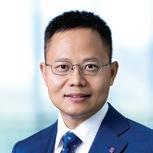
Professor George Yang is a Professor of School of Accountancy at CUHK Business School. He obtained his BA and MA degrees from Peking University and PhD degree from Kellogg School of Management of Northwestern University and is a certified public accountant (non-practicing) of China (CICPA).
Professor Yang has published research articles in journals such as the Accounting Review, Management Science, and the Review of Accounting Studies and has been on the editorial board of the Accounting Review since 2016. He has broad research interests related to various accounting and finance issues driven by agents’ economic incentives.
He is particularly interested in topics on corporate governance, information disclosure, financial analysts and insider trading.








Relying solely on heirs and dynasts isn’t sustainable for family businesses, but opening arms to outsiders may threaten the legacy. A study finds the formula for balance.

History has shown the instrumental role of family businesses in the economy. A 2025 index from EY shows that 500 global family businesses earn US$17.6 billion annually, with 80 per cent yielding more than US$5 billion. Many of them are headquartered in Asia, including Hong Kong with household names like Jardine Matheson, Sun Hung Kai Properties, Chow Tai Fook and the like.
It is natural to have family members in executive roles to ensure the firms continue their legacy and identity. On the other hand, family firms often hire professionals outside the family at top management levels to sustain growth and remain competitive. The firms’ success then depends on how well these family and non-family managers collaborate, combining their unique skills and perspectives to create a competitive edge.
Inevitably, hypothetical dividing lines or faultlines emerge between the two that can impact company performance in various ways. While these divisions can lead to conflicts and impair operations, they can also enhance information sharing and positively affect the firms’ earnings, like a double-edged sword. The question is, how far can these lines affect the dynamics of family firms?
“While family and non-family managers collaborate as members of the same team, they differ significantly in terms of family affiliation, personal goals, and the treatment they receive from the controlling family,” says Dora Lau, Associate Professor (Teaching) in the Department of Management at the Chinese University of Hong Kong (CUHK) Business School.
To explore the implications of this division among Chinese family firms, Professor Lau conducted a study titled Top management team faultline size and family firm performance, in collaboration with Li Wenwen of Sun Yat-Sen University, He Ai of South China University of Technology and Li Xiaotong of Qingdao University of Science and Technology. “The study found that large demographic faultlines between family and non-family managers would benefit firm performance,” Professor Lau says.
The team analysed data from 262 family firms listed on the Shanghai and Shenzhen stock markets from 2004 to 2010. They identified a firm as family-owned if its ultimate owner is a family or an individual. Firm performance was evaluated using return on assets, a financial performance metric to assess how effectively a company utilises its assets to generate profits. Meanwhile, the faultline size was assessed based on demographic factors like age, educational background, and gender.
A clear division inherently exists in the top management based on whether the executives are family members or not. Greater disparities in demographic characteristics between family and non-family members indicate larger faultlines, and the bigger gaps between the two are found to bring more benefits. Professor Lau and her
“The study found that large demographic faultlines between family and non-family managers would benefit firm performance.“
— Professor Dora Lau
collaborators posit that this relationship stems from “dominance complementarity” and “information and knowledge complementarity”.
Dominance complementarity refers to the power and status differences between family and non-family managers. In the context of family businesses, the controlling family often hires professional managers to supplement the expertise and skills that family managers may lack. However, there are clear-cut power and status differences between them, with family managers typically holding greater authority and influence.
“A well-defined power hierarchy allows the lower-status subgroup to defer to the higher-status subgroup, facilitating faster decision-making, clearer strategic direction, and more consistent execution,” Professor Lau says. “Together, these dynamics contribute to smoother and more efficient team operations.”
In information and knowledge complementarity, when a significant faultline exists between family and non-family managers, their distinct demographic characteristics and knowledge often result in different ideas in decision-making. “As a result, the top management teams will be aware of more issues, delve deeper into these issues, and consequently arrive at more comprehensive and creative strategic decisions,” she adds.
Despite the potential benefits, certain factors can interfere with the positive effects of faultline size. While non-family managers tend to find power centralisation among family members reasonable, experiencing unfair treatment from the controlling family can lead to dissatisfaction. This dissonance, known as
bifurcation bias, refers to a tendency to treat individuals differently based on whether they are inside or outside the family.
“The bifurcation bias poses an identity threat for non-family managers, thus enhancing dissatisfaction, inequity perceptions, or turnover intentions,” Professor Lau says. “As a result, the subgroup of non-family managers might lack the willingness or motivation to collaborate with family managers.”
Another mediating factor is the development of intermediate institutions, including market intermediaries such as auditors and solicitors. In well-developed regions, these intermediaries can facilitate communication between parties and provide essential information for company growth, sometimes replacing non-family executives in sharing external knowledge within families.
Therefore, in regions with poorly developed intermediary institutions, the complementary information and knowledge from non-family managers could be crucial for the performance of family businesses. “If market intermediaries are rare, family firms could hardly find credible and sufficient information and knowledge outside of the firms,” she adds.
Unbiased treatment is crucial
This research also highlights that the dynamics within top management teams in family firms can vary significantly from those in non-family firms. Although it may seem easier for family firms to hire professional managers with similar demographics to reduce conflicts, Professor Lau proposes a different approach. She recommends that these companies intentionally build top management teams with diverse and complementary skillsets, backgrounds and experiences.
“Rather than prioritising similarity or loyalty, controlling families should focus on recruiting professional managers who bring fresh perspectives and expertise that complement the capabilities of family members,” she says.
Meanwhile, Professor Lau encourages family firms to provide unbiased treatment toward non-family managers to cultivate commitment and foster collaboration. One strategy is offering favourable treatment to non-family members, such as competitive compensation packages.
Additionally, emphasising organisational identity over family characters by promoting a shared vision and core values that transcend familial boundaries can boost team cohesion. “Doing so can strengthen team collaboration, reduce identity-based tensions, and enhance the commitment and motivation of non-family executives,” Professor Lau adds.

Professor Dora Lau
Professor Dora Lau is an Associate Professor (Teaching) in the Department of Management at CUHK Business School, as well as the Director of the MSc in Management Programme and the Associate Director of the Centre for Entrepreneurship and the Centre for Family Business of the School. Her research interests include demographic diversity and faultlines, team compositional dynamics, relational trust effects, including interpersonal trust and feeling trusted, upper echelon composition and organisational impact, family business challenges and management, and Chinese management. Professor Lau has published extensively in top-tier journals such as the Academy of Management Review, the Academy of Management Journal, and the Journal of Applied Psychology. She has served as the consulting editor of the Journal of Applied Psychology and the associate editor of the Journal of Trust Research.
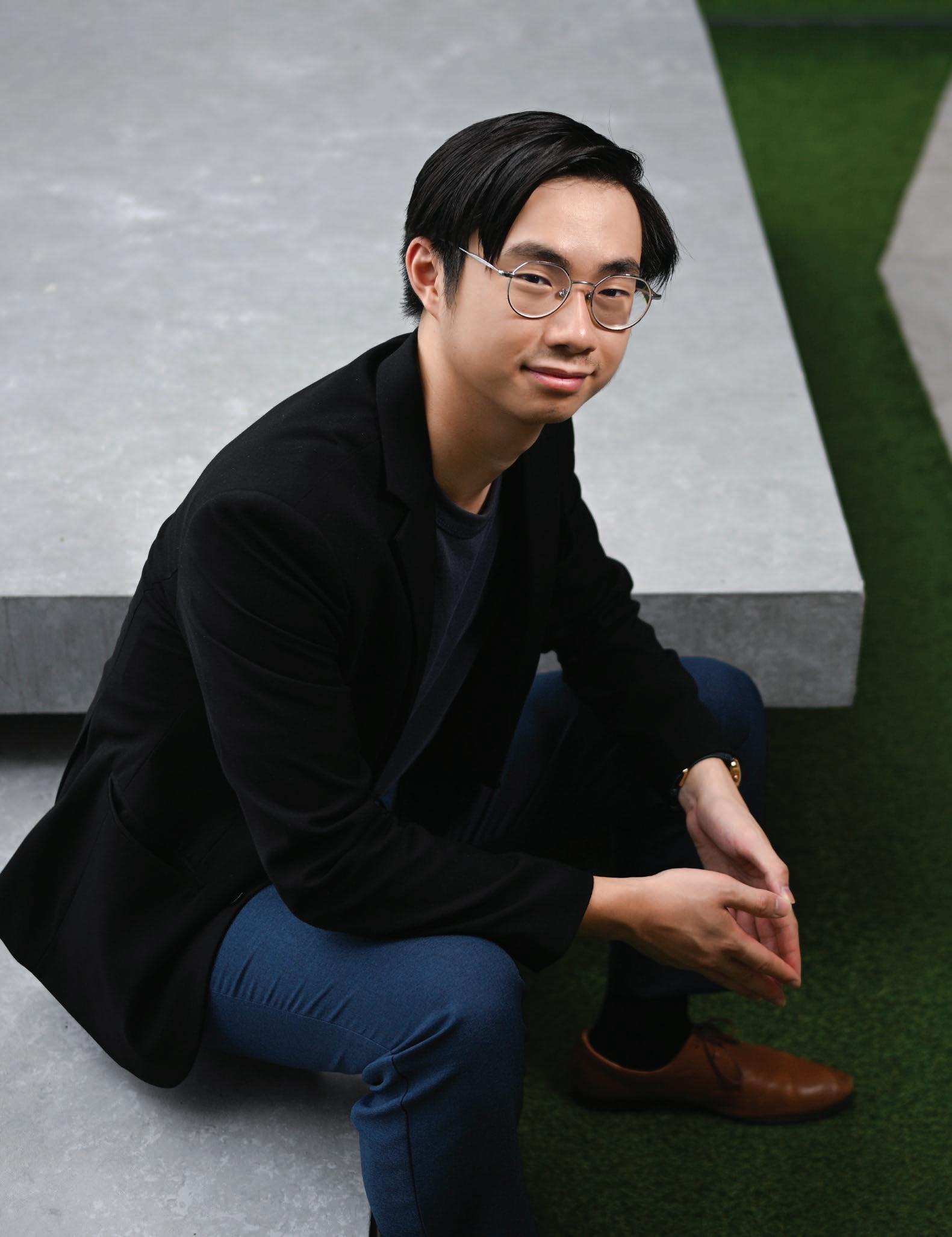

The recent launch of DeepSeek’s open-source AI models, alongside other democratised AI tools, has intrigued, inspired and energised the world. Businesses can now leverage powerful AI to enhance productivity without requiring substantial infrastructure investments or expensive licensing fees. Likewise, individuals can augment their expertise at little to no cost. The potential impact of AI on business performance is profound–even before DeepSeek’s release, Accenture reported that organisations embracing AI-led processes achieved 2.4 times higher productivity and 2.5 times greater revenue growth. As advanced AI becomes increasingly accessible, this trend is set to accelerate.
However, translating AI capabilities into tangible business value remains challenging. A study by the Boston Consulting Group found that seven in 10 implementation barriers stem from people and processes, while technology issues account for about onefifth of challenges, and AI algorithms themselves cause merely one-tenth of adoption problems. This distribution underscores the critical role of human factors in AI adoption.
The Gen Z advantage: fusing traditions and innovations
Ivan Wong Man-yeung (GBS 2022) has witnessed this dynamic firsthand. As a Gen-Z digital native, AI and digital technologies have been integral to his life in his early university years. “From using GPT2 to assist with homework in the past to now deploying AI-powered tools at work–such as delegating administrative tasks to ChatGPT and using AI-powered code editors for software development–these innovations have significantly expanded our capacity. They enable us to focus on growth, productivity and higher-value work,” he explains.
Ivan has harnessed his digital fluency and business acumen to help companies modernise their operations through technology. He co-founded Flowclass, a startup that helps educational institutions better manage students’ payments and communication processes, and Flowtura, a web marketing agency designed to empower businesses to tap into the digital economy.
However, while Gen-Z entrepreneurs like Ivan champion rapid technological adoption, his experience with SMEs reveals a more nuanced reality. “Many businesses are hesitant because AI cannot yet fully automate critical processes. Tasks that require multiple approvals, reviews and cross-departmental collaboration still demand human oversight and accountability.” Additionally, many SMEs lack the foundational digital infrastructure necessary for AI implementation, and have to digitise their data before utilising AI to its fullest.
“After working with over a hundred educational organisations over the past two years, we realised that both businesses and the economy need time to adapt.” Ivan emphasises the importance of identifying what works for companies and what does not, educating organisations about technological opportunities and providing targeted solutions that address unresolved business pain points where technology can deliver tangible value.
Although AI and large language models have made a vast array of knowledge and skills readily accessible–and generative AI has simplified the creative process while streamlining complex tasks–this technological progression simultaneously presents an unexpected challenge for workforce development.

Ivan’s startup helps educational institutions modernise their operations through technology, aiming to bridge the gap between digital natives and non-native generations.
As AI increasingly handles – and even automates – entry-level tasks traditionally assigned to graduates and early-career workers, companies are rethinking their hiring strategies for junior positions. A Deloitte study suggests that this automation could reduce entrylevel job openings, limiting the on-the-job learning opportunities essential for career growth. This raises a critical question: How will the next generation gain the essential skills for career progression?
Ivan believes that rapid learning and continuous expertise development have become crucial for staying competitive. “There is always the possibility that AI will replace the work of lower-skilled clerical workers. The shelf life of professional skills is also shrinking due to technological disruption. The key is to stay ahead of the curve–proactively positioning ourselves as users of the latest tools rather than risking being replaced by them. Learning faster isn’t just about maintaining our competitive edge–it’s also how we secure our continuing relevance in the future of work.”
He also advocates for the development of learning communities. “For example, Taiwan and Thailand have a strong freelancing culture that allows people to acquire new skills outside of work. Young professionals form communities and discussion groups to share the latest technical knowledge and industry trends, fostering mutual growth. This is a pursuit that would benefit Hong Kong’s young professionals.”
As AI rapidly reshapes the future of work and job roles, how should education prepare the future generation? Beyond imparting hard knowledge and technical skills, Ivan believes it is equally important to teach students how to learn independently, leverage emerging technologies and maintain an open mindset.
“Foundational knowledge remains essential because we need to evaluate what AI produces. For example, without technical competency in web development or design, how can we evaluate whether AI-generated codes or graphics meet the required standards and are fit for purpose? Without understanding business processes, how can we effectively implement automation that truly meets operational needs? While AI enhances our capabilities and offers powerful assistance, we must serve as discerning gatekeepers.”
Given the pace of this ongoing technological evolution, the ability to continuously learn and embrace change is just as crucial. “This way, students can become lifelong learners, capable of navigating and shaping technological change–wherever it may lead.”
Ultimately, Ivan believes success in the AI era hinges on uniquely human soft skills: creativity, communication, teamwork, emotional intelligence, ethical reasoning and a commitment to the welfare of others. “By cultivating these fundamental human capabilities while harnessing AI, we can create a future that enhances–rather than replaces–our humanity.”

In the era of AI revolution, Ivan believes that rapid learning and continuous skill development are crucial for his generation to stay competitive.

Watch the video


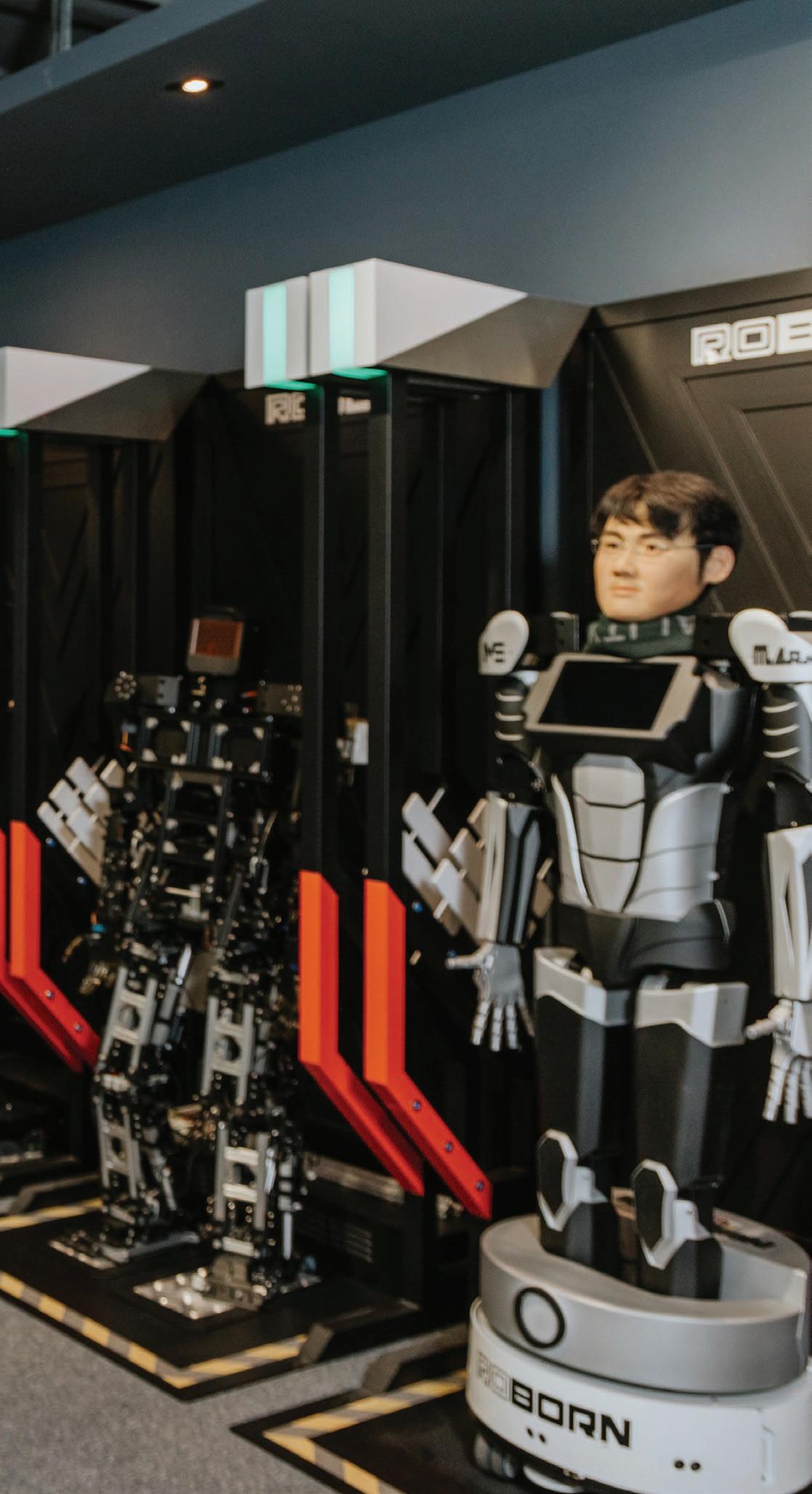
Alifelong enthusiast of Mobile Suit Gundam, Mark Mak (MBA 2011) has dreamed since childhood of harnessing robotic power to protect the planet—a heroic vision that has propelled him toward a career in robotic innovation. Today, his team has developed over 20 types of robots and holds more than 100 patents across fields as diverse as healthcare, education, and property management. In early October 2024, this “Hong Kong Ironman” was honoured as one of the Ten Outstanding Young Persons—a distinction that not only solidifies his commitment but fuels his ambition to build a technology brand Hong Kong can truly call its own, inspiring the next generation to embrace the world of technology and innovation.
As founder of Roborn, headquartered in Cyberport, Mark has curated an impressive array of robotics in his workspace. Among them are China’s first 5G motion-control humanoid robot, medical robots adept at operating equipment within ICUs, and the disinfection stationed in various isolation facilities. Once the realm of science fiction, robots are now woven into the fabric of everyday life, fulfilling needs across sectors— a concept Mark captures with the term “techanisation”.
“What I mean by ‘techanisation’ is applying advanced technology across various ecosystems to drive efficiency and productivity. Our goal is to develop robotic solutions tailored to diverse industries rather than focusing on a single product within a single sector,” Mark explains.
To understand the ecological needs of different industries, Mark first delved into the market pain points of each sector. His goal was very clear: “All custom-designed robots should aim to enhance productivity or protect human life safety.” For instance, the intelligent robotic system for vitality restoration training for the elderly that he developed can simulate therapists providing diagnosis and rehabilitation training to patients through a contactless teleconsultation system, reducing the therapists’ repetitive tasks.
Mark observes that the demand for robotics varies significantly by region. In Hong Kong, there is a significant need for medical and healthcare robotics. Given the city’s internationally acclaimed medical standards, many health-related devices are tested in Hong Kong first, providing a “seal of confidence” for eventual entry into other markets. In mainland China, robots find a stronghold in traditional high-risk industries; heavy industry operators deploy robots for remote high-voltage cable maintenance and confined-space tasks, effectively reducing occupational hazards. In Europe, where labour costs are substantial, businesses increasingly rely on robots for labour-intensive tasks, especially in manufacturing and service industries, to bolster productivity.
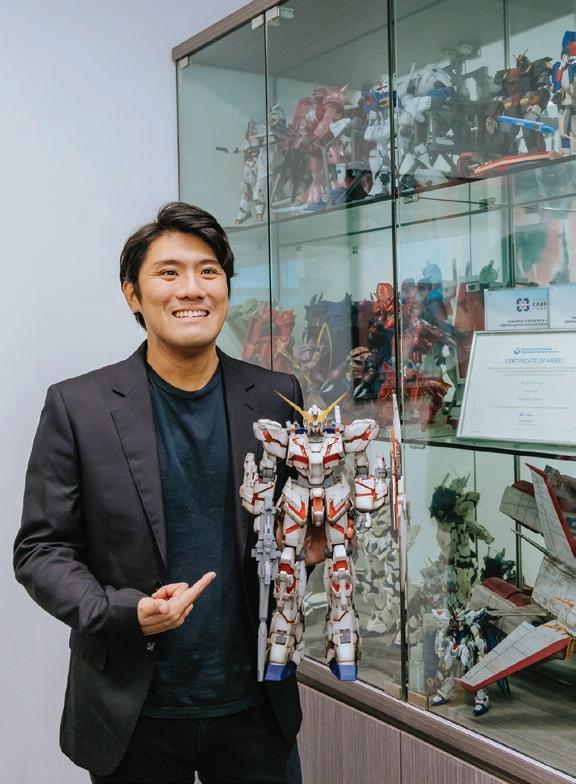
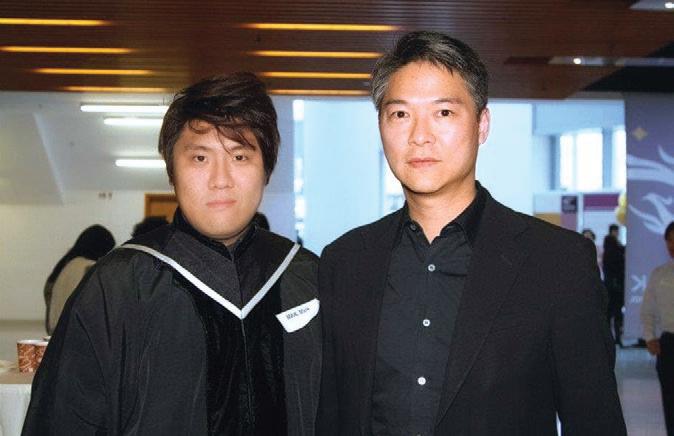
In the wake of the pandemic, society has embraced a “new normal” in which technology and robotics have become ever more integral to daily life, unlocking fresh business opportunities for Mark. However, thriving amid these technological currents requires constant reflection and selfimprovement. Early in his career, he felt a gap in his business management knowledge despite his tech-focused work. This led him to pursue further studies at CUHK Business School, where he connected with current business partners, including Eden Lu (MBA 2011), and studied marketing with Professor Larry Poon. “I am deeply grateful to CUHK Business School—not just for the business insights but for the robust alumni network, which has been instrumental in my entrepreneurial journey. Today, many of my team members are CUHK alumni.”
The theme for 2024’s Ten Outstanding Young Persons Selection is “Keep Striving”, which Mark says resonates deeply with his own philosophy. Reflecting on the award, he shares, “It serves as a reminder to always review my path, both looking back and ahead. I will keep equipping and bettering myself while considering how I can contribute even more to society.”
Mark reflects on his upbringing in a modest environment. “But I had a vision, and I pursued it with determination—that is what truly matters.” He aspires to be a role model for the younger generation, using his inventions to introduce them to top-tier educational technology and to plant the seeds of innovation within them. Deeply connected to his roots in Hong Kong, Mark is driven by a desire to give back, setting his sights on creating a home-grown tech brand that the city can take pride in. “It could be my own brand, or I could be helping other local tech brands make a name on the international stage—either would be meaningful.” Ultimately, his mission is to inspire others to join the journey, strengthening Hong Kong’s position as a global innovation and technology hub.
First published in the CUHK Business School Alumni Website on 6 November 2024. This article is republished with permission from the School’s Alumni Affairs and Development Office.
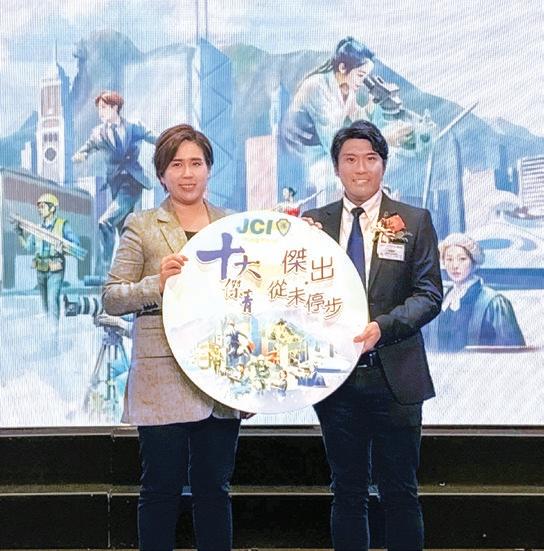

Named one of 2024’s Ten Outstanding Young Persons, Mark (right) shares that the experience gave him a chance to reflect on his life and consider how he can continue to grow and contribute to society.
As a father of two, Mark (centre) initially hesitated to develop educational technology robots, believing the technology could be easily replaced. However, he shifted his perspective upon recognising the potential to inspire tech dreams in the next generation.





CUHK Business School alumni exemplify leadership and creativity by navigating dynamic industries around the globe. Blending cultural insight and creative problemsolving, they have demonstrated that adaptable, forward-thinking approaches are essential in today’s interconnected business landscape.
Martin Sigmund (MBA 2010) VP of Medium Power Transformers Europe –Lead Factory Linz, Siemens Energy Austria GmbH

Q1 Could you briefly describe your current job scope or responsibilities?
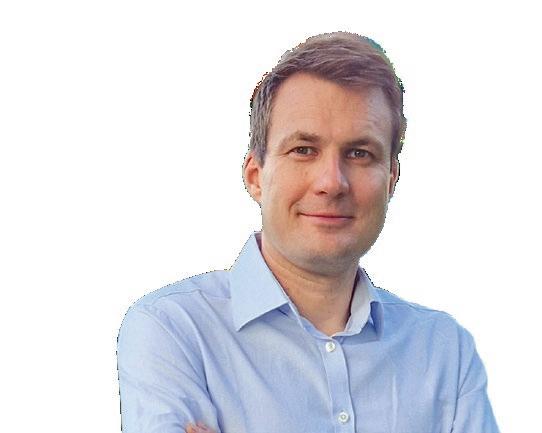
My responsibilities encompass leading the Linz (Austria) manufacturing plant, overseeing cluster functions, and managing the two additional manufacturing plants located in Dresden (Germany) and Trento (Italy). Our transformer products play a crucial role in driving the global energy transition.
Q2
Please describe your residing location in three words.
Q3 Which industry do you see as having strong business potential in your residing location and why?
Q4 What is the one thing you miss the most during your studies at CUHK Business School?
Beautiful, relaxed, friendly. Linz, the third-largest city in Austria with about 210,000 residents, is nestled among hills and bisected by the Danube River. It seamlessly blends its role as an industrial hub with a thriving cultural scene, creating a dynamic living environment. I particularly enjoy inline speed skating and cycling along the picturesque paths by the Danube River and the Mill Quarter.
Linz boasts a diverse and robust economic landscape, with well-developed industries and technological innovation sectors, underpinned by leading companies like Voestalpine AG in steel and technology, Siemens Energy in transformers, KEBA AG in automation, and Dynatrace in software intelligence. In addition to these established companies, Linz is known for its vibrant startup culture, further cementing its reputation as a hub for industrial and technological growth.
I loved my time studying in Hong Kong and being in Asia. One thing I miss the most is the vibrant atmosphere and the unique experiences the city offers. I look forward to returning, hiking on Lamma Island, and enjoying its famous cuisine–a perfect combination of nature and gastronomy.

Ming Deng (IBBA 2012)
Principal, Boston Consulting Group
David Lim (HRE 2022)


My team specialises in advising principal investors and private equity firms across the entire deal lifecycle — from market assessment and due diligence to post-merger integration, strategic direction, and exit planning. Additionally, I support corporate clients in the formulation and execution of their in-house M&A strategies, with a particular emphasis on the complexities of cross-border transactions.
Sophisticated, peaceful, organised. Tokyo embodies a sophisticated, serene and meticulously organised essence. The city reveals its true depth not merely through its celebrated cuisine, impeccable services or natural beauty, but through the presence of profound thinkers and individuals who call it home. A subtle delicacy and tranquillity permeate life here — an understated richness that one can appreciate only through the experience of this remarkable city.
Japan has embarked on a positive economic trajectory after decades of stagnation, drawing a surge of investor interest. Professional services — from consulting and financial advisory to real estate and hospitality — are thriving, bolstered by this influx. Simultaneously, Japan’s traditionally robust sectors, such as precision manufacturing and healthcare, continue to demonstrate their enduring strength in this revitalised economic environment.
Sales Executive, JW Marriott Hotel Seoul

I oversee sales operations and contract management of the public sector business at the hotel. My role involves implementing effective sales and marketing strategies to secure contracts and executing revenue management plans to achieve quarterly and annual budget targets, relying on strong coordination across departments to ensure success.
Seoul, the vibrant capital of South Korea, is dynamic, modern, and forward-thinking. It is renowned for its economic success, high levels of education, numerous corporate headquarters, and worldclass digital infrastructure, all contributing to its status as a global innovation hub.
I really miss the evenings by the pool, whether in quiet solitude or in the easy company of friends, and the afternoons spent in the main library, with the soft rhythm of rain outside. There is a certain unparalleled beauty in the simplicity and freedom of student life. It remains one of the most cherished periods in my life.
The hotel industry in Seoul is more vibrant than ever. Demand for meetings, incentives, conferences and exhibitions (MICE) business has surged, as local companies have resumed corporate events with enthusiasm post-COVID. Additionally, the global popularity of K-culture has attracted numerous international companies and associations to choose Seoul as their event destination. This trend is reflected in record-breaking revenue achievements at our property since its opening.
I fondly remember gathering with friends over sodas and drinks in front of the Pavilion of Harmony at New Asia College, enjoying the stunning view and relaxed atmosphere. I also miss hosting friends in my dorm to cook together, simple moments that were deeply cherished.

CUHK POMS-HK International Conference fosters global collaboration in operations management
CUHK Business School hosted the POMS-HK International Conference 2025, bringing together more than 700 scholars from around the world to explore the growing intersection of operations management and AI.
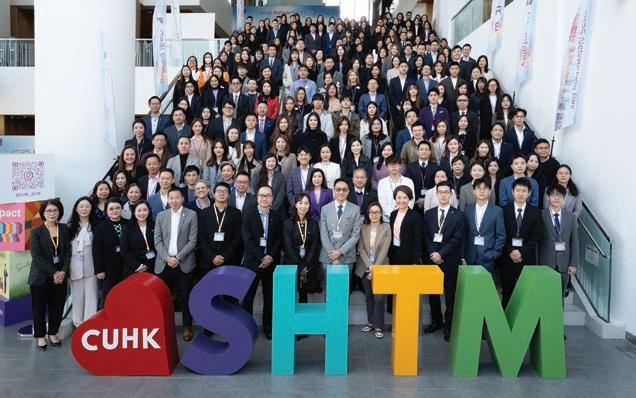
CUHK School of Hotel and Tourism Management Networking Day 2025 fosters connections for tomorrow’s leaders
The event brought together more than 300 students to meet 200 professionals from 60 leading companies in real estate, hospitality, and hotel sectors, providing insights into emerging career trends.
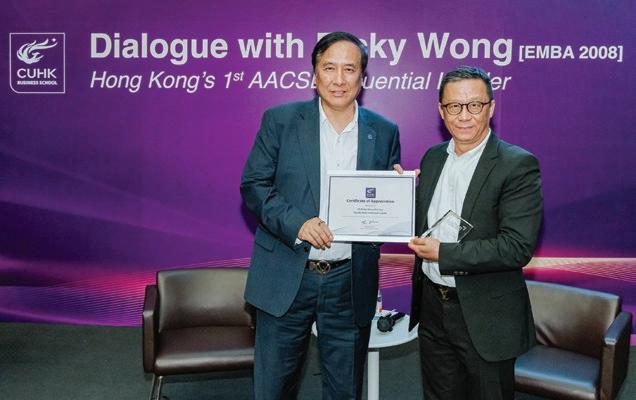
CUHK EMBA Alumnus Ricky Wong named AACSB’s Influential Leader
Ricky Wong (EMBA 2008), founder of HKTVmall, is named one of the 2025 Influential Leaders of AACSB for his innovative leadership and notable impact he brings to business. Ricky is the first Hong Kong recipient of this prestigious award.
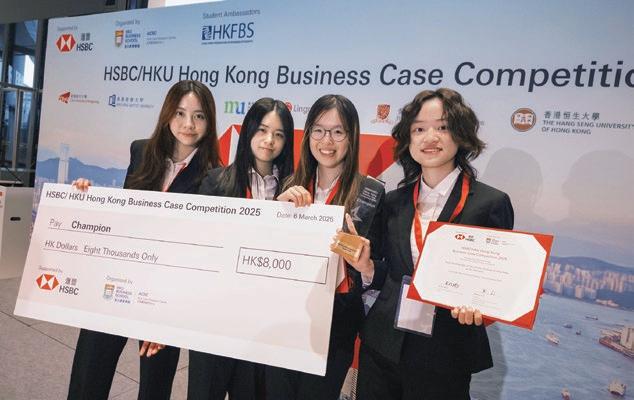
CUHK Business School team wins HSBC-HKU Hong Kong Business Case Competition 2025
Four CUHK Business School undergraduates took home the championship at the HSBC-HKU Hong Kong Business Case Competition 2025. The team demonstrated exceptional creativity and analytical skills in tackling real-world business challenges.
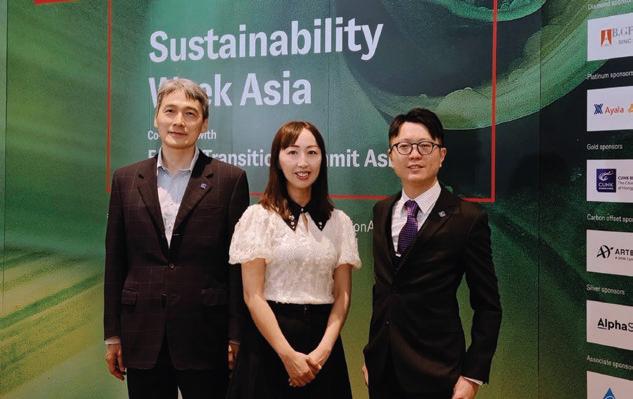
CUHK Business School partners with Economist Impact to drive sustainability in Asia
CUHK Business School experts shared their research insights with nearly 1,000 senior business and sustainability leaders at Economist Impact’s Sustainability Week Asia in Bangkok.
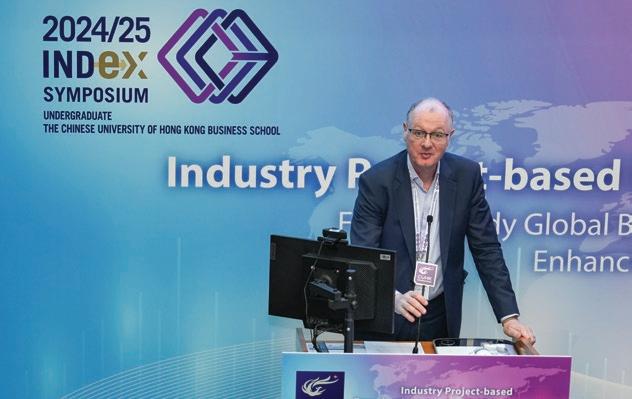
INDEX Symposium takes experiential learning to new heights
The Industry Project-based Experiential Learning (INDEX) Symposium, co-hosted by CUHK Business School and Singapore Management University, brought together 40 global educators to develop innovative approaches to business education.

CUHK Business School DBA Programme hosts inaugural workshop and launches student association
The Doctor of Business Administration (Chinese) Programme gathered three cohorts of students, along with professors from CUHK Business School and Fudan University, for thought-provoking dialogues in its inaugural thesis workshop and celebrated the launch of its student association.

CUHK Business School Masters in Finance Ranks 4th in Asia by Financial Times
CUHK Business School MSc in Finance is placed at 21st worldwide and 4th in Asia in the Financial Times Masters in Finance 2025 –Pre-experience Programmes Ranking, up by four places from 2024.
Th e Chinese University of Hong Kong (CUHK) Business School
Address
Telephone
Email Website Facebook/LinkedIn Instagram/WeChat
15/F, Cheng Yu Tu ng Building 12 Chak Cheung Street, Shatin, Hong Kong
+852 3943 7785
bafac@cuhk.edu.hk www.bschool.cuhk.edu.hk
CUHK Business School cuhk businessschool